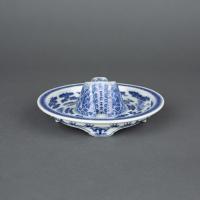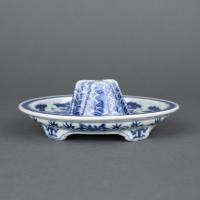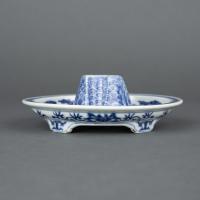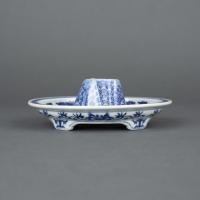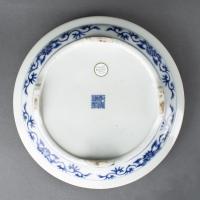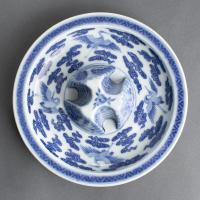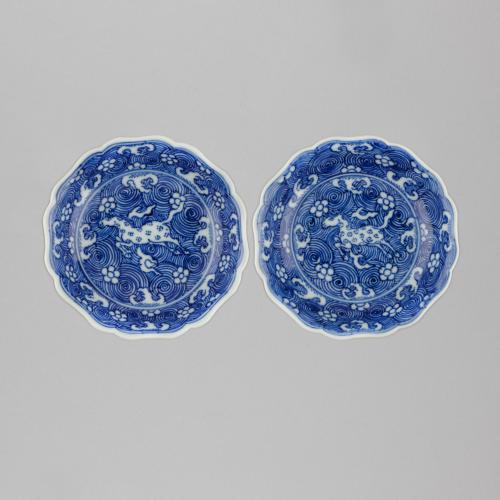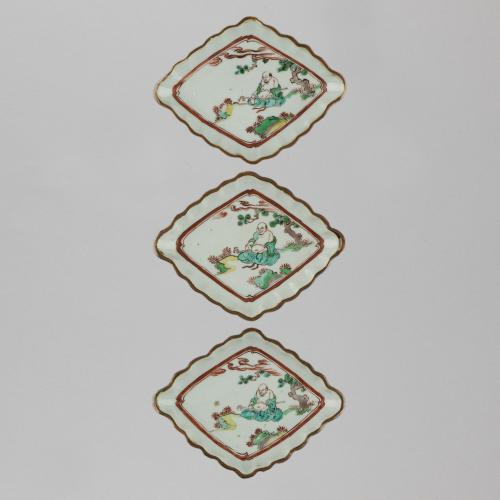
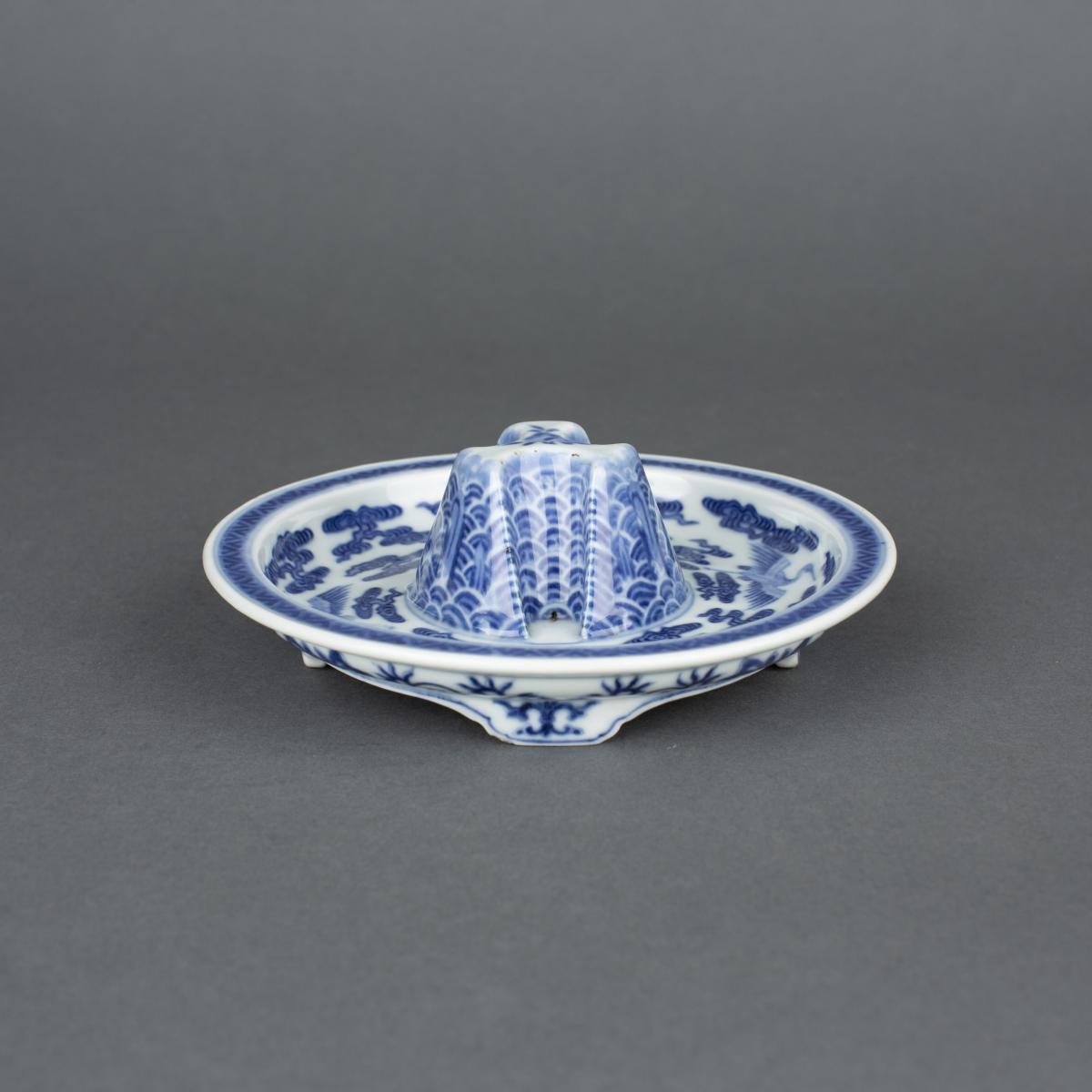
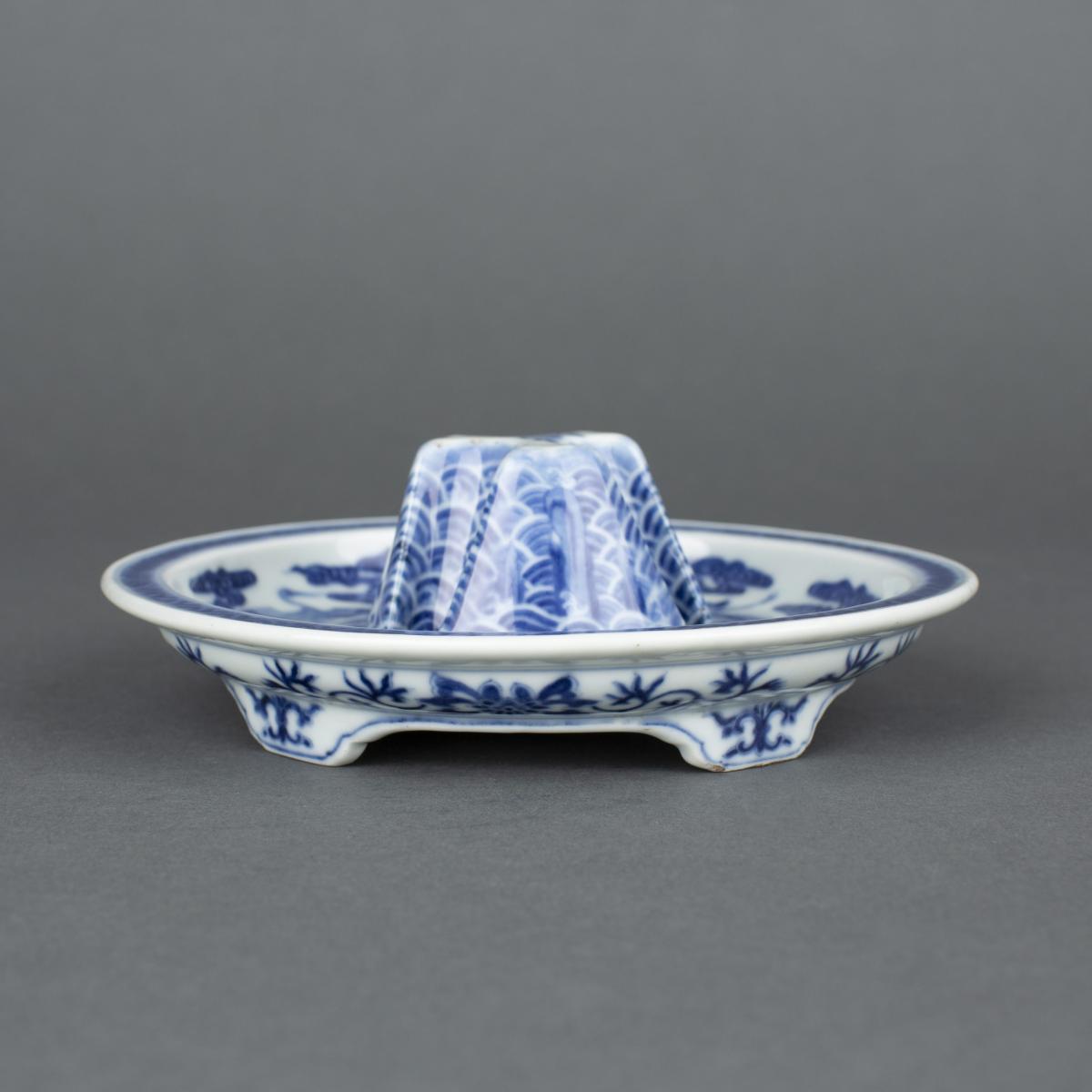
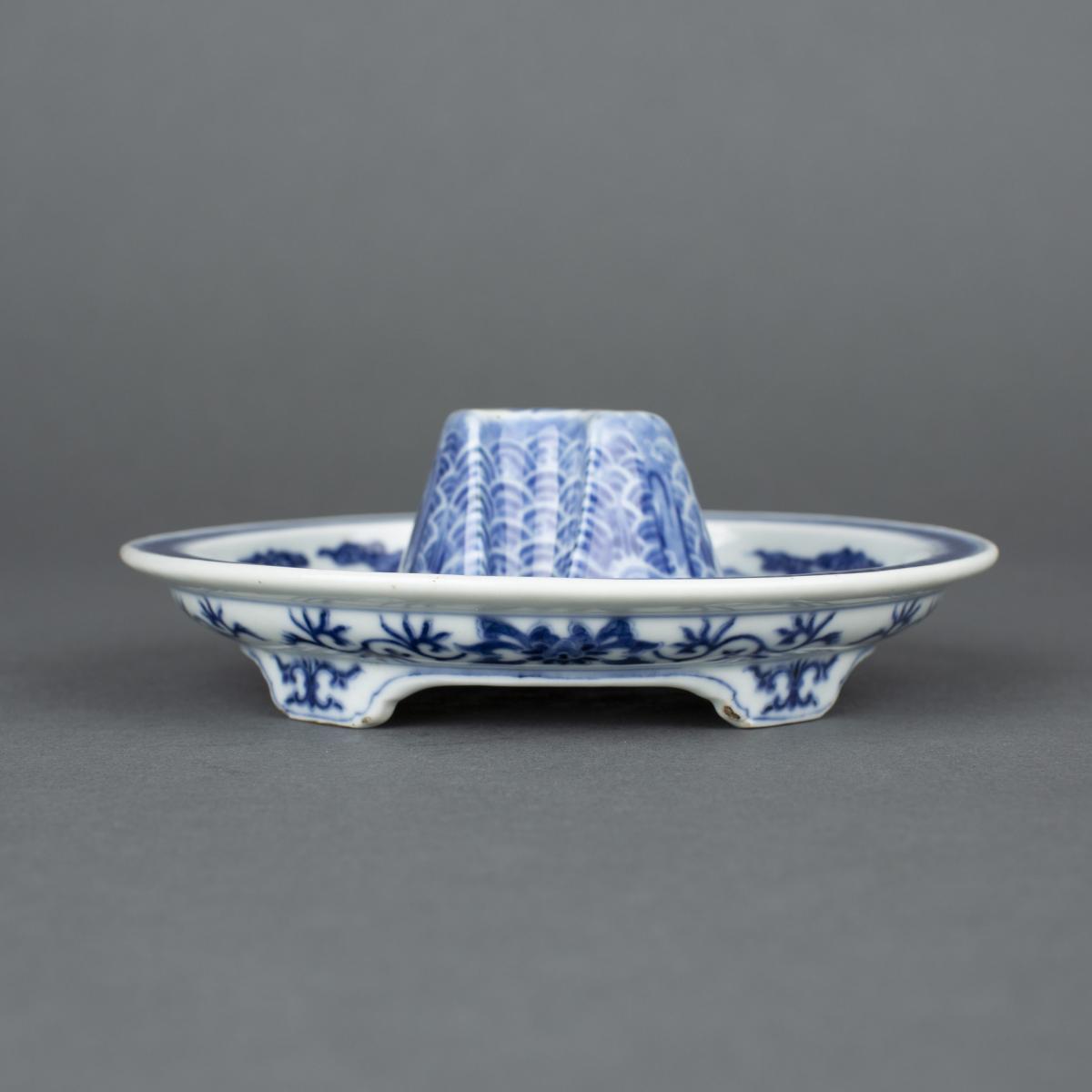
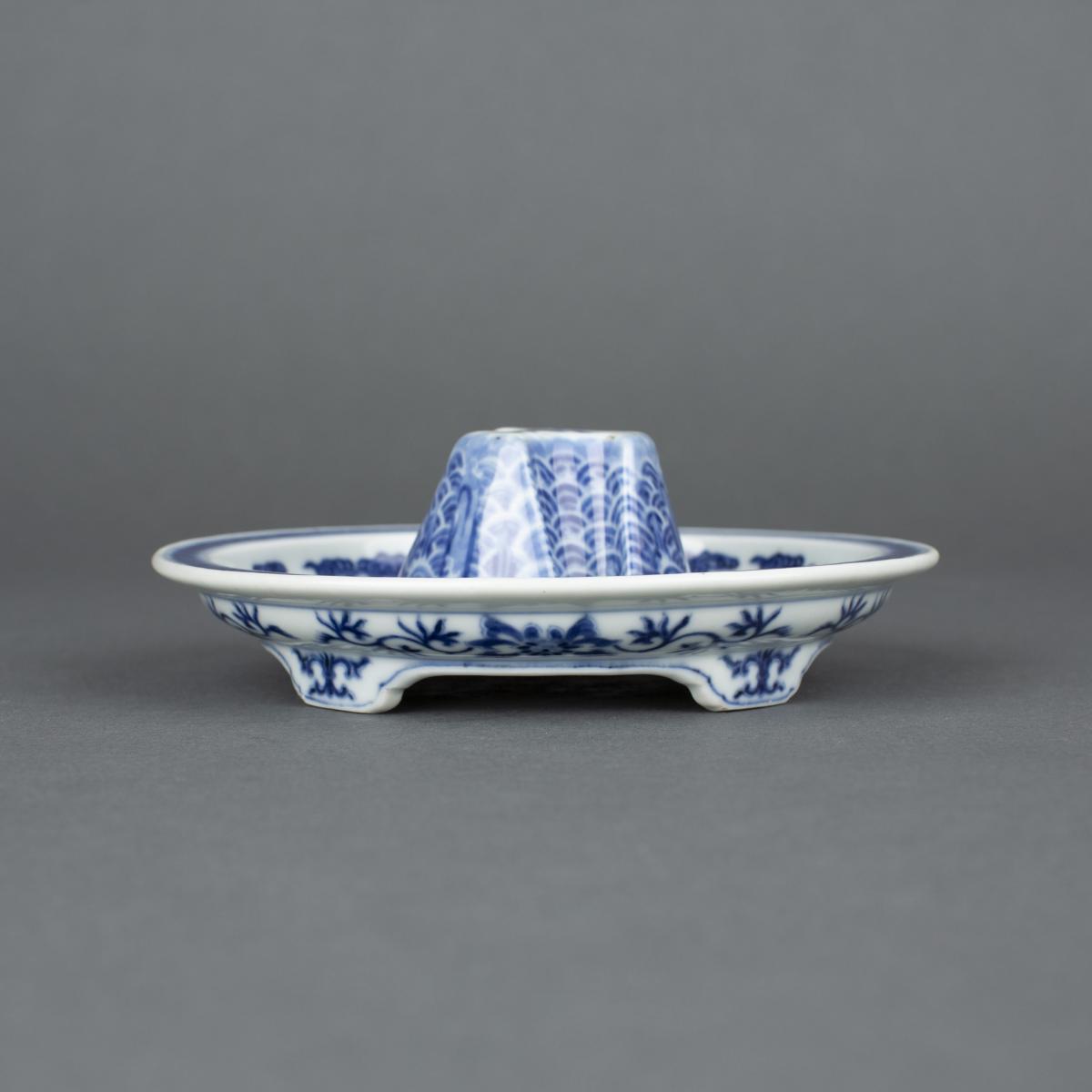
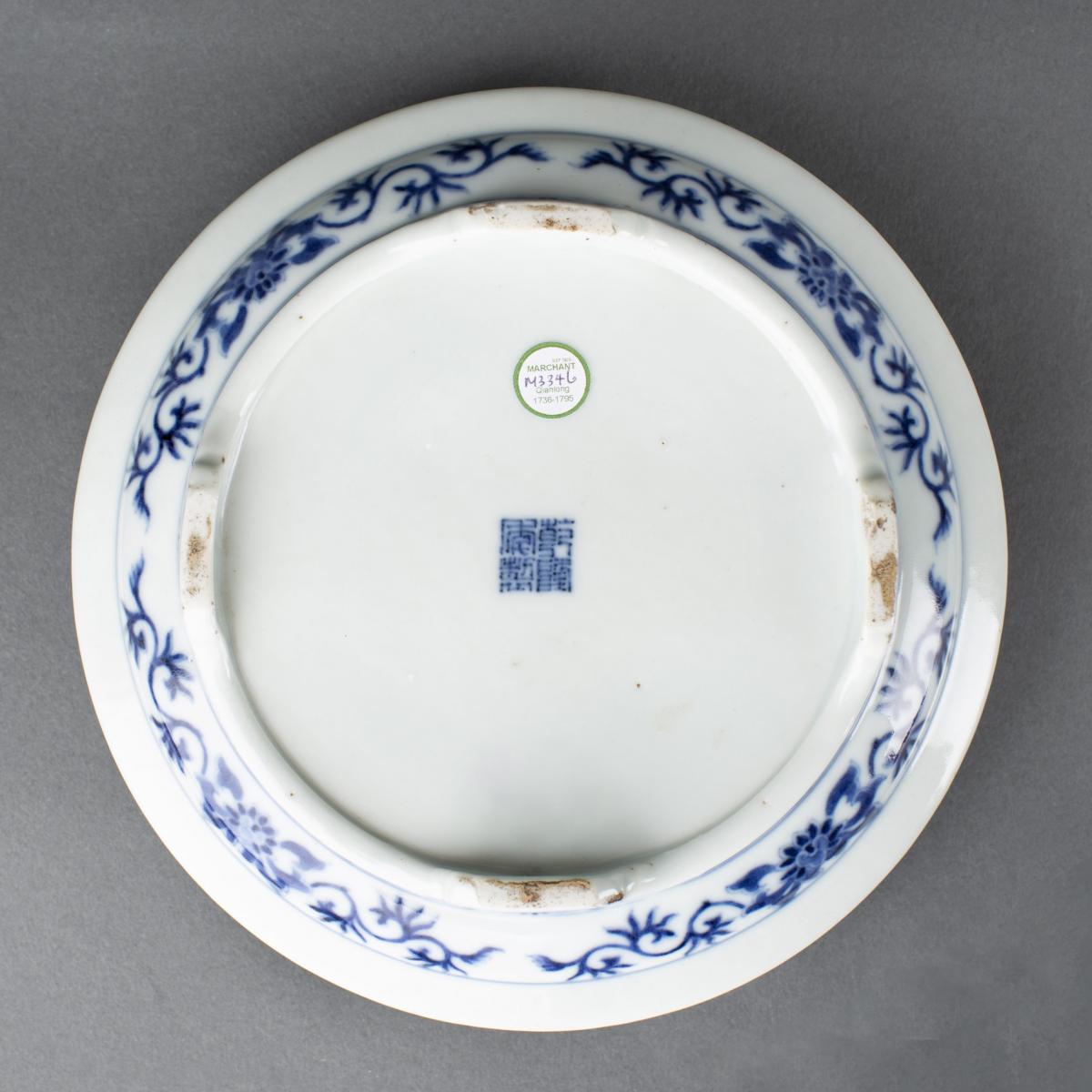
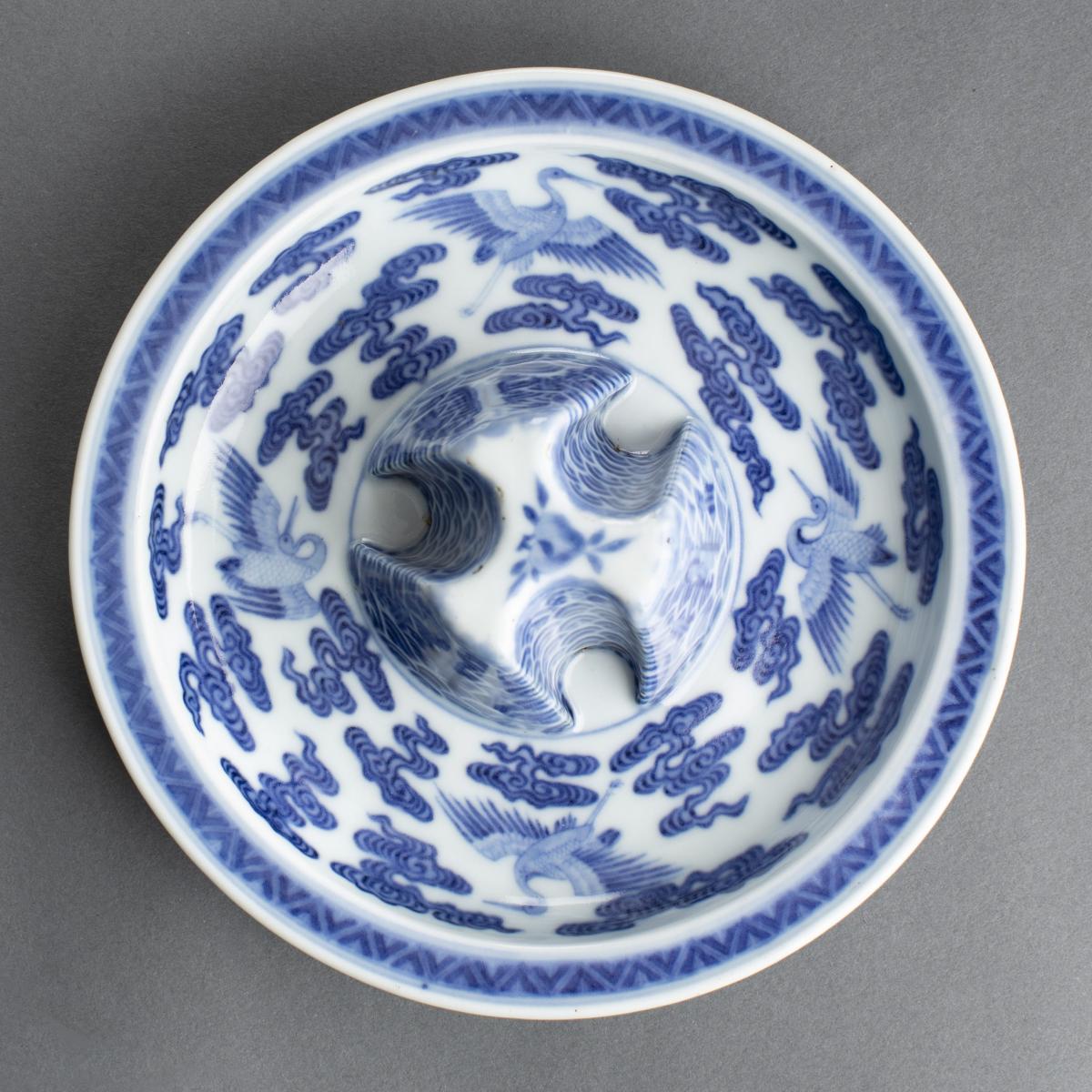
Price
£58000.00This object is eligible for a Certificate of BADA Provenance
The BADA Standard
- Since 1918, BADA has been the leading association for the antiques and fine art trade
- Members are elected for their knowledge, integrity and quality of stock
- Our clients are protected by BADA’s code of conduct
- Our dealers’ membership is reviewed and renewed annually
- Bada.org is a non-profit site: clients deal directly with members and they pay no hidden fees
Chinese imperial porcelain blue and white jue stand on four bracket feet, modelled with a central ‘mountain’ decorated on the sides with rocks and billowing waves with a peach and leaves on the flat top, encircled by four cranes in flight amongst ruyi-head clouds, beneath a flat everted rim painted with triangular diaper, the underside with stylised lotus flowerheads and scrolling branches.
6 3⁄8 inches, 16.2 cm diameter.
The base with a four-character sealmark of Qianlong in underglaze blue and of the period, 1736-1795.
御 製 青 花 山 形 仙 鶴 紋 爵 托,清 乾 隆,乾 隆 年 製 款
- Published by Marchant in their 2015 exhibition of Qing Porcelain, no. 40, pp. 82-83.
- From an old Swedish private collection, given as a gift to the owner by his grandparents when he was a young man. This started his interest in Chinese porcelain.
- A similar stand with its matching jue, in the Victoria and Albert Museum, is illustrated by Rose Kerr in Chinese Ceramics, Porcelain of the Qing Dynasty, 1644-1911, colour page 68, no. 44, C.95A&C-1913, where the author notes, ‘plate 44 is in the form of a bronze vessel called in Chinese a jue, which was a container for heating wine with three legs and two posts on the lip for lifting it away from the flame, it has a stand with a raised centre which helped to anchor the legs of the jue, and it is decorated with the design of stylised rocks amongst waves like the pattern on the hem of Qing dragon and court robes. It is painted with cranes flying amongst clouds. The crane was believed to live for a very long time and was thus emblematic of longevity.’
- A further jue and stand in the Shanghai Museum is illustrated by Wang Qingzheng in A Dictionary in Chinese Ceramics, Chapter 1, p. 26, where the author notes, ‘according to the document of the Department of Imperial Manufacture, in 1743 (eighth year of the Qianlong reign), the Imperial Commission included sets of jue and their stands. Two varieties are specified: one with a rouge ground.’ A fencai example with identical mark in the Qing Court Collection is illustrated by Yang Xin in Porcelains with Cloisonné Enamel Decoration and Famille Rose Decoration, The Complete Collection of Treasures of the Palace Museum, Beijing, Vol. 39, no. 105, p. 121.
- This jue stand is based on a Yongle porcelain prototype with dragons encircling the mountain form central holder. An example was exhibited at The Arts Council Gallery Exhibition of Chinese Blue and White Porcelain, The Oriental Ceramic Society, 1953-1954, no. 39, pl. 8a, and was sold by Christie’s London in their auction of the Fredrick M. Mayer Collection of Chinese Art, 24th June 1974, lot 87, pp. 162/3, and published by Regina Krahl in Chinese Ceramics from the Meiyintang Collection, Volume Two, no. 672, pp. 60/1, sold again by Sotheby’s Hong Kong in their auction of The Meiyintang Collection, Part II, 5th October 2011, lot 37, pp. 188/197, where Regina Krahl illustrates two other jue and stands in the National Palace Museum, Taiwan and an excavated example from the Ming imperial kiln site, Jingdezhen, now in the Capital Museum, Beijing.
Condition report
Excellent, apart from a few bubble bursts on top edges.Stock number
M3340Open Monday-Friday 10.30-5.30; other times by appointment
The BADA Standard
- Since 1918, BADA has been the leading association for the antiques and fine art trade
- Members are elected for their knowledge, integrity and quality of stock
- Our clients are protected by BADA’s code of conduct
- Our dealers’ membership is reviewed and renewed annually
- Bada.org is a non-profit site: clients deal directly with members and they pay no hidden fees


